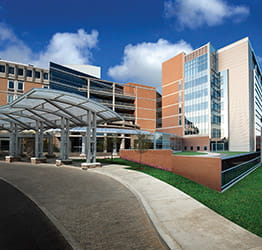On this page
What Is Lobular Carcinoma?
Lobular carcinoma in situ (LCIS) is a high-risk but benign (noncancerous) condition of the breast. LCIS forms in the milk-producing lobes and doesn't tend to spread beyond these glands.
Since it's not invasive, LCIS doesn't develop into breast cancer. But a history of lobular carcinoma in situ may put you at a higher risk of developing breast cancer in the future.
Unlike ductal carcinoma in situ (DCIS), doctors aren't clear if LCIS is a precancer. Because of this, many health care providers prefer to use the term "lobular neoplasia" instead of "lobular carcinoma in situ."
What is invasive lobular carcinoma?
Invasive lobular carcinoma also forms in the milk-producing lobes of the breast, but it spreads to the breast tissue, lymph nodes, or elsewhere in the body.
Lumps are uncommon in lobular carcinoma, which is difficult to detect by breast exam or mammogram. Instead, you may notice thickening or fullness in the breast.
Lobular carcinoma is the second most common form of breast cancer, representing 5% to 15% of all invasive breast cancers. But it's more likely than other types of breast cancer to occur in both breasts.
How common is LCIS?
Lobular carcinoma in situ isn't common. But that may be because doctors often find LCIS when they're doing a breast biopsy looking for another condition.
What are the types of invasive lobular carcinoma in situ?
The different types of LCIS are:
- Classic LCIS — The cells lining the lobules of the breast are smaller and uniform in size.
- Florid LCIS — The cells lining the lobules of the breast have formed a mass with a nucleus of dead cells in the middle (called central necrosis).
- Pleomorphic LCIS — The cells lining the lobules of the breast are larger and appear abnormal.
What causes lobular carcinoma in situ?
Doctors don't know what causes LCIS.
What are lobular carcinoma in situ risk factors and complications?
LCIS risk factors include
- Family history — You may have a higher risk of developing LCIS if you have a family history of breast cancer.
- Age — Most people diagnosed with LCIS are between the ages of 40 and 60.
Complications of LCIS
If you have LCIS, your risk of developing breast cancer in either breast is an estimated 7 to 12 times higher. Because of this, your doctor will likely recommend regular breast cancer screenings going forward.
Back to top
What Are the Signs and Symptoms of Lobular Carcinoma in Situ?
Lobular carcinoma in situ doesn't cause a lump or other symptoms.
Back to top
How Do You Diagnose Lobular Carcinoma in Situ?
Your doctor won't feel LCIS during a breast exam, and a mammogram won't detect it either. Most often, a diagnosis of LCIS is incidental — meaning doctors find it when they're looking for something else. This happens during a breast biopsy, when your doctor takes a tissue sample to examine for cancer cells.
Back to top
How Do You Treat Lobular Carcinoma in Situ?
If you're diagnosed with LCIS, especially classic LCIS, you may not need treatment. But you'll need to be screened regularly for invasive breast cancer.
If the pathologist determines that the LCIS cells lining your breast lobules are florid or pleomorphic, your doctor may recommend removing the mass or all of the abnormal cells with an excisional biopsy.
Back to top
By UPMC Editorial Staff. Last reviewed on 2025-09-18.
















